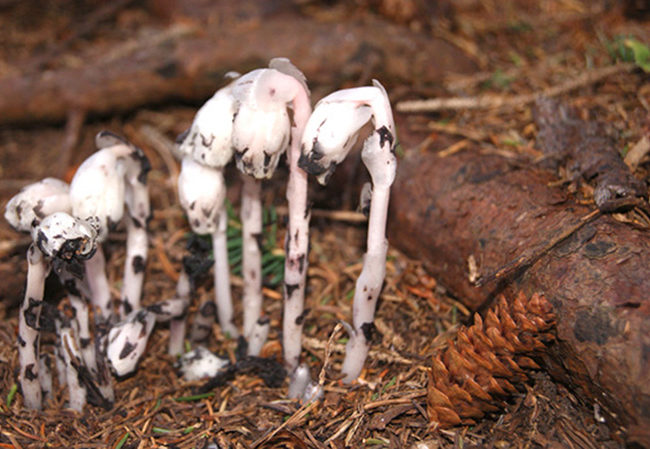Indian pipe (Monotropa uniflora L.) are unbranched herbaceous plants that parasitize the roots of other plants or obtain their nutrients (especially carbon to make carbohydrates) from decaying organic matter. They also depend on soil fungi (mycorrhizae) for nutrition. They have no green color because they lack chlorophyll and stems and flowers are waxy to the touch and have the same white color, turning black after drying. Flowers appear nodding over. The flowers are commonly seen from June to September in coniferous forests sometimes growing in dense shade or in mixed deciduous woods in leaf mould. There are only two species of Monotropa in the northern hemisphere, both occur in Nova Scotia, and this one commonly referred to as Indian Pipe is most prevalent.
Their white color and upside down pipe like appearance make them an interesting plant to look for on the various hiking trails in Cape Breton. They are one of my favorite plants to find while hiking in the CB Highlands Park.
~Paul MacDougall~
Information from Flora of Nova Scotia


